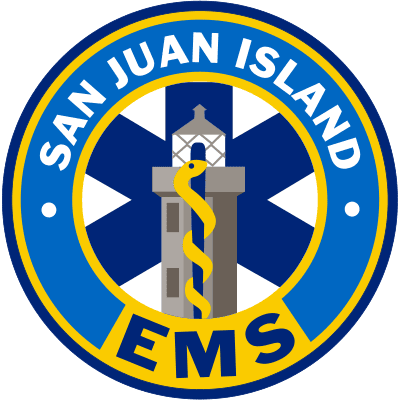FAQs
Billing
I received a bill — I thought residents don’t have to pay out of pocket for services?
There are no out-of-pocket costs for residents in San Juan Island EMS’s taxing district for our Advanced Life Support (ALS) or Basic Life Support (BLS) ambulance services. We credit your out of pocket expenses by the property taxes you pay as a business, homeowner or renter. There are a few times when you might receive correspondence from Systems Design, our billing company located in Central Washington:
- An inquiry for insurance information. Be sure to check the reason for the correspondence. In order to confirm your status you may be requested to sign a form allowing us to bill your insurance or verify your status as a resident.
- You received a bill from another ambulance company, when you were transported off island and another ambulance company picked you up from the helicopter or boat. This is not our bill and you must contact them to resolve your issue.
- You did not give a local address when you were transported and the billing company thinks you are not a local resident.
- If you still have questions, please call the billing company at the number listed on their correspondence.
General Questions
How can I become an Emergency Medical Technician (EMT)?
About every three years we conduct a class. If you are interested in joining our agency, check back to see if we are putting on a new class. This training is not for the squeamish, nor is it taken lightly. It is a HUGE time and energy commitment.
What’s the difference between a Paramedic and an EMT?
EMTs and Paramedics are emergency professionals who have different levels of training and capability. Paramedics are trained to handle Basic Life Support (BLS) and Advanced Life Support (ALS) emergencies. Their skills include endotracheal intubation (breathing tubes), IVs, medication administration, simple surgical procedures that restore airway, breathing, and circulation, advanced EKG interpretation and more. Emergency Medical Technician (EMTs) are trained to take care of BLS patients. This includes oxygen administration, splinting, emergency childbirth, CPR, AED defibrillation, and much more. EMTs and Paramedics work together as a team to bring the best care to you in an emergency.
How many personnel respond to an emergency?
We average 4 people on each call. We limited those on scene to the number needed to provide safe and expert care.
